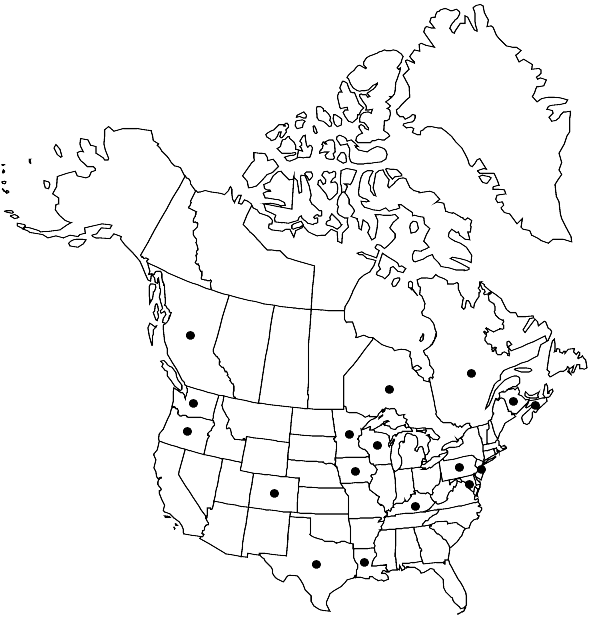Difference between revisions of "Physcomitrium immersum"
in A. Gray, Manual, 648. 1848,.
FNA>Volume Importer |
imported>Volume Importer |
||
| Line 45: | Line 45: | ||
|publication year= | |publication year= | ||
|special status= | |special status= | ||
| − | |source xml=https:// | + | |source xml=https://bibilujan@bitbucket.org/aafc-mbb/fna-data-curation.git/src/bb6b7e3a7de7d3b7888a1ad48c7fd8f5c722d8d6/coarse_grained_fna_xml/V27/V27_268.xml |
|genus=Physcomitrium | |genus=Physcomitrium | ||
|species=Physcomitrium immersum | |species=Physcomitrium immersum | ||
Revision as of 22:31, 27 May 2020
Plants light green. Stems 2–3(–4) mm. Leaves obovate to ovate-lanceolate, distal leaves 2–3 mm; margins toothed or occasionally smooth distally; costa sub-percurrent to short-excurrent. Specialized asexual reproduction absent. Seta 0.5–1.2 mm. Capsule immersed, 1–1.2 mm, broadly cupulate; neck short, indistinct; exothecial cells irregular hexagonal or oblong, walls somewhat unevenly thickened; suboral cells consisting of 1–3 rows of short-rectangular cells. Spores 30–38 µm, papillose.
Phenology: Capsules mature late fall–spring.
Habitat: Wet soil in disturbed places
Elevation: moderate to high elevations
Distribution

B.C., N.B., N.S., Ont., Que., Colo., Iowa, Ky., La., Md., Minn., N.J., Oreg., Pa., Tex., Wash., Wis., South America.
Discussion
Physcomitrium immersum is easily recognizable by its immersed, broadly cupulate capsules that are usually clearly visible within the spreading leaves.
Selected References
None.